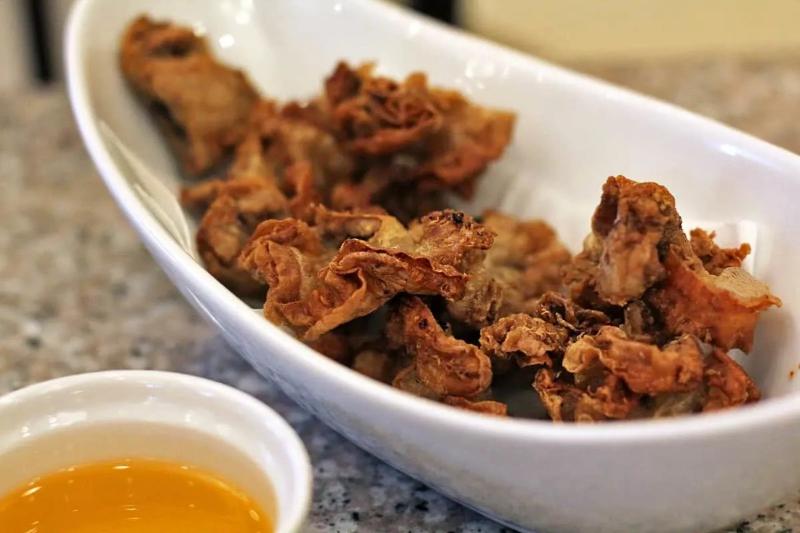
In many Spanish-speaking parts of the world, chicharon refers to a snack made with deep-fried pork rinds. In the Philippines, it refers to that too but it can also refer to other similarly deep-fried dishes usually made with either pork or chicken.
Some of the most common examples of chicharon in the Philippines include chicharon bituka, which refers to pork intestines that have been chopped up into bite-sized pieces and deep-fried. Chicharon manok or chicken skin chicharon refers to deep-fried chicken skin. It’s technically a type of chicharon though most Filipinos refer to it simply as “chicken skin”.
It’s hard not to like anything crunchy and deep-fried but my absolute favorite type of chicharon is chicharon bulaklak (pictured below). It refers to a type of chicharon made with pork mesentery. The mesentery is the thin, web-like membrane that supports the small intestine. When the mesentery is detached, it forms a frill or ruffle-like ornament resembling a flower. Chicharon bulaklak literally means “flower chicharon”.
Chicken skin and chicharon bulaklak are my favorites but deep-fried pork rinds are definitely the most popular and readily available type of chicharon in the Philippines. If you say “chicharon”, people will assume that you’re asking for deep-fried pork rinds. They usually come in two varieties – with fat and without fat. Chicharon with fat tastes so much better but it’s also a lot more sinful.
No matter the type, chicharon in the Philippines is usually served with vinegar to help cut the fat and give it a nice sour kick. It’s often enjoyed as a snack or as a bar chow dish with beer.
Web editor: Wang Xiaoxuan
Reviewer1: Zhang Yanlan
Reviewer 2: Pang Bo
Reviewer3:Tang Caihong
